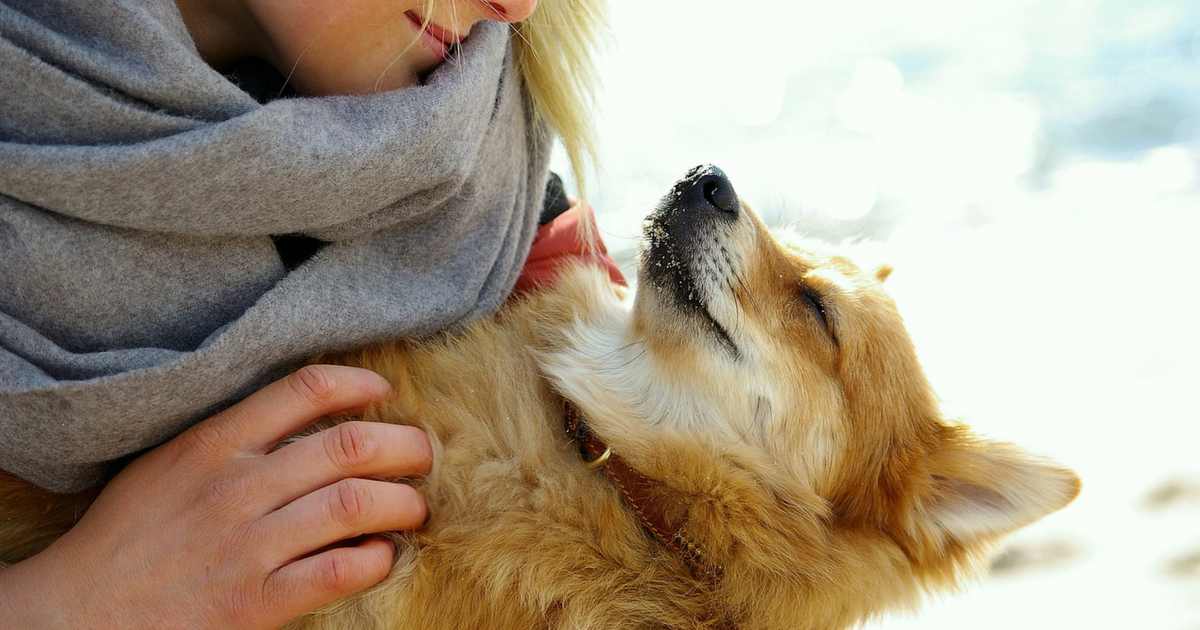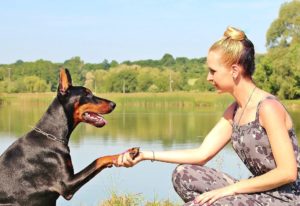
Dog Massage
The Benefits of Massage and How to Massage Your Dog
There is nothing better than a good massage to feel relaxed, reduce muscle soreness, and minimize the stiffness in your body. The same goes for dogs! A dog massage is a great way for you to help your dog release tension held in their bodies. Dogs spend every day on all four legs and don’t have access to the comforts that humans do (oils, massage chairs, etc.). Giving your dog a massage will calm anxiety, warm him up before exercising, and relieve joint pain and pressure. Dogs have a different bone structure than humans with different pressure points. It is not as simple as putting your knuckles in your dog’s shoulder blade to work out a knot. We need to be aware that there is such a thing as too much massage – in excess it can cause more pain and soreness. Make sure you are giving your pooch a massage that benefits him!
Decrease Anxiety or Stress

Benefits:
If your dog has a nervous disposition or often struggles with anxiety and stress, a dog massage may be all they need. A light massage on their fur works to help your dog feel comforted and less stressed, relaxing him with your gentle touch. This dog massage is beneficial for stressful events, such as fireworks or thunderstorms and is also a great method to calm puppies down. Puppies, when their energy is high, do not know how to calm themselves. Applying this massage technique can also teach your puppy to relax before the next play time.
How to Give This Dog Massage:
With your hand open, gently stroke your palm on your dog’s fur, almost as if you are trying to touch only the tips of the hairs. Slowly move your hand downwards from your dog’s head all the way to their tail. Repeat this slow motion with a light hand, continuously stroking from head to tail while reassuring your dog. This motion soothes your dog’s nerves, giving him the opportunity to relax– knowing he is safe and secure while you are petting him.
BONUS TIP: If you are ever feeling stressed yourself, studies have shown that petting your dog can help you! This simple contact with your dog has been found to reduce blood pressure related to stress. In addition, petting your dog will increase the levels of oxytocin in the body, a hormone that works to reduce stress. Not only will massaging your dog help him calm down, but it will keep you relaxed as well!
Reduce Pain (Joint and Other Injuries)

Benefits:
Just as we see a massage therapist to reduce pain, massage can benefit your dog’s body too. As dogs age, they begin to feel the pressure on their joints that has built up overtime. A massage can be just the thing to relieve the pain from joints or other injured areas. This massage can also act as rehabilitation for your dog’s injury as you increase the blood circulation and work out areas of tightness. Easing this tension on those pressure points can help your dog move easier, sleep better, and enjoy life even more.
How to Give This Dog Massage:
When massaging your dog, begin by lightly petting your dog, getting him used to your touch. Slowly start to add a small circular motion to your strokes with light pressure. Using a gentle circular motion helps to warm up your dog’s muscles, getting them ready to relax. You do not want to press too hard and cause more pain to the area, so, if in doubt, always use a softer touch. Gently massage your dog’s shoulders, legs, feet (be very gentle on their pads), down the spine, as well as the hips.
Your dog will not be able to voice how the massage feels, so watch for clues that may suggest discomfort or pain. If the movements feel good, your dog may close his eyes, lean into the motion, or make pleased grunts. If you notice your dog whimpering, yelping, pulling away, or showing stress signals (constant yawning, whites of the eyes showing, etc.) be sure to stop the massage. You want to do what is best for your dog and if you have any doubts, contact your veterinarian. If your dog has a pre-existing injury, be sure to speak with your vet before massaging your dog. Your vet will have suggestions and tips on how to help your dog (and their specific injury) without causing additional harm.
Exercise Warm-Up

Benefits:
The next time you are planning on heading to the dog park, take a few minutes to warm up your dog’s joints. As we know, warming up before a workout can prevent muscle pain and other more serious injuries. Warming up your dog before running and playing with other dogs is good to get the muscles prepared for activity. This is especially beneficial for their legs, as they are what take all of the weight and movement.
How to Give This Dog Massage:
To warm up your dog’s muscles begin by making slow rubbing motions all over your dog’s body. If you feel comfortable, you can gently squeeze and release an area, warming up the muscle for movement. Work on areas such as the hips, legs, shoulders, and neck. You can also apply a kneading motion (not too hard) in these areas to work the muscles that lay deeper below the skin. When making massaging movements, try to make them rhythmic – this works to get the blood flowing better, matching that of a heartbeat. Remember, only do what you are comfortable with and always watch your dog for signs of discomfort, pain, or agitation.
BONUS TIP: When trying to determine how often or how long you should massage your dog, watch your dog’s body language. If your dog is pulling away, you can conclude that he is done. For most breeds, a massage twice a day can be beneficial with one in the morning and one in the evening (before exercise and after exercise). Massages can last up to 10 minutes, but anything beyond 20 minutes is too much. These daily massages will result in some big changes in his attitude, movements, and outlook on life!
Calm and Relaxation

Benefits:
Not all dog massages need to work towards fixing a negative problem, some are just for fun! Have ever noticed how peaceful and happy your dog is when getting his ears scratched? There is a reason for that! When a dog’s ears are massaged, the hypothalamus and pituitary glands are stimulated which releases endorphins. Endorphins are known mainly for the amazing feeling they give – pain reduction, increased mood, and feelings of pleasure.
How to Give This Dog Massage:
Before you massage your dog’s ears, wash your hands of any dirt or lotions. If these were to get into your dog’s ear it could lead to infection. In order to massage your dog’s ears, simply take the ear between your fingers and rub it gently. Use circular motions with your thumb and move your way along the ear (base to tip). Light pressure will go a long way and you will probably notice your dog exhibiting behaviours of contentment. As always, watch your dog for any resistance and stop the instant you suspect he is unhappy. Once you give your dog an ear massage, you will probably find them snuggled up to you ready for a long nap.
As with any massage, begin lightly and slowly work your way over your dog’s body, gently massaging the muscles. Once you have mastered the dog massage, your pup will be coming back to you for more bonding spa days.
